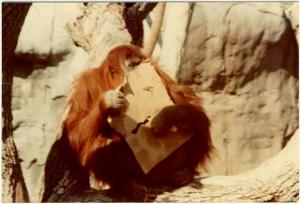Sale on canvas prints! Use code ABCXYZ at checkout for a special discount!

When you think of New Orleans, Louisiana there are many things which come to mind, you may think about the Architecture, the Fine Artist at Jackson Square, the French Quarter and the French Market, Cafe duMonde (Coffee and Beginets) the Cuisine, Mardi Gras, dancing and marching in a Second Line, the Music, the Audubon Insectarium or the history and the locals..
However you plan to discover the city, either to walk, drive, bike, take a cruise aboard the Riverboat Natchez, bus along Magazine Street or take the St. Charles Avenue Street Car there is always something fascinating around each and every corner you turn. Here in New Orleans procliamed by locals we live in the "The Big Easy" or "The City That Care Forgot" and " N'awlins"!.
There is one corner of the city which every visitor must see and that is the New Orleans Audubon Zoo and Nature Insititute , located on a parcel of land in the Historic Garden District uptown just off the Mississippi River.
The zoo was first constructed back in 1916 with the first exhibit an aviary, and expanded and grew over the years including during the great depression.
The Audubon family began in Audubon Park�once home to Native Americans, and later, to New Orleans' first mayor, Etienne de Bor�. He founded the nation's first commercial sugar plantation here and developed its first granulated sugar through a process invented by Norbert Rillieux, a local free man of color. The land would not fall into public hands until 1850, when a philanthropist willed it to the city. During the Civil War, the location alternately hosted a Confederate camp and a Union hospital. In 1866, it was the activation site for the 9th Calvary, the "Buffalo Soldiers" whose defense of our country's western frontier made an indelible mark on America's African-American heritage. {1}
Site improvements made for The World's Industrial and Cotton Centennial Exposition of 1884 (Louisiana's first world's fair) laid the foundation for an urban park. The city had acquired the land for this purpose in 1871 and in 1886, city planners changed the park's name from Upper City Park to Audubon Park. This was in tribute to artist/naturalist John James Audubon who painted many of his famed "Birds of America" in Louisiana. {2}
A governing board was appointed by the city in 1894 to find the best way to develop the land and by the turn of the century, the development had been entrusted to landscape architect John Charles Olmsted. Olmsted's family firm had risen to prominence for its design of New York's Central Park, and New Orleanians soon watched their own scenic retreat materialize from Louisiana swamplands. {3}
The Audubon Commission was established by State Act in 1914 to maintain and develop Audubon Park. A flight cage was added to the park in 1916, and its popularity launched the community's call for a full-scale zoo. Today Audubon Park includes the site of Audubon Zoo and many amenities including riding stables, tennis courts, a golf course and clubhouse, jogging trails, lagoons, baseball fields, soccer fields and more than 300 acres of green space for people to enjoy. {4}
Audubon Park does not receive dedicated city funding for operations and is sustained by proceeds generated by Audubon Zoo and other facilities managed by Audubon Nature Institute. To fulfill its responsibility for the improvement and long-term conservation of Audubon Park, Audubon Nature Institute is launching a focused fundraising initiative, Olmsted Renewed. The campaign supports the care and preservation of existing trees; the planting of new trees and other natural landscaping; and the maintenance of existing structures throughout the Park {5}
My first blog here on FAA is of my time spent with the Orangutan Primate I observed and took photos of in the mid 1980's.
As I approached the Orangutan living quarters I stopped and observed its movements. The Orangutan kept moving around searching for something. As I watched in amazement, the Orangutan picked up a piece of cardboard and caught glimse of me standing watching him.. At the time I was check my camera settings and looked up and the Oragutan poked a hole in the cardboard and started to mimic me. I would raise my camera up and then the Orangutan would do the same with the piece of cardboard. Then after this went on for quite sometime, the Orangutan then started to eat the cardboard. I then realized then the primae was inneractint with me. The photos which I took that amazing day reveal the inneraction between primate and the photographer. .
Note: The restoration project of the New Orleans, Louisiana Audubon Zoo and Nature Institute was the brainchild of a local Ron Foreman 38 years ago. Ron Foreman along with locals, investors and fundrasing events had set the plan into action. A zoo with a natural environment to house the many animals was constructed. The existing New Orleans Audubon Zoo was once compared to as an "animal ghetto".
Today, with the dedicated staff of zoologist and continued visits by tourist world-wide and locals, the New Orleans Audubon Zoo and Nature Insititue has maintained its rating as one of the top 5 zoo's to visit in America!
Blog Notes: Acknowledgement, special thanks to the New Orleans Audubon Zoo and Nature Institute for allowing me to include the paragrahs {1} - {5} from their offical web page,.
All photos and blog notes are copyrighted by the photographer Michael Hoard (eye see colors) (c) 2013.
No photos can be used without the sole permission of the photographer Michael Hoard. (c) 2013.
http://www.auduboninstitute.org/visit/audubon-park/fun-favorites/history.
new orleans photos